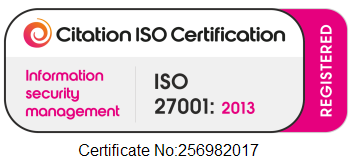Dramatic industry changes are happening as we switch from what was a Candidate Driven market into the hands of the Employer.
Negative Predictions by OBR
OBR estimates the economy will see a shrinkage of 35% by the end of spring, set to cause at least 2 million job losses.
They also estimate that GDP will plunge by a third in the second quarter and by circa 13% for 2020. Job loss is expected to hit 10% by the end of June with borrowing at the fastest rate since the Second World War.
So, after 10 years of steady job creation, this will be one heck of a fall. The market has shifted from exceptionally low unemployment <3% to what Is expected to be high unemployment >10%.
The OBR is warning of an economic slump not seen since the great depression of the 1930s.
Although the OBR paints a very pessimistic outlook, it may not end up that bad, even if they are half right, we are without a doubt now looking at a switch from a Candidate driven market to an Employer Led Market again.
With this being the general direction, we need to be prepared for this change. It is, without doubt, a new phase; so let’s be ready for it.
The Candidate Driven Market
Let’s remind ourselves first of the current situation. The only market that millennia’s will have ever known.
Employers have had to adjust knowing jobs are candidate-driven, not feeling the real pressure until they have had to recruit someone. Candidates have been in the driving seat for a while now, having the power to command more than just the best salary package.
Many will often have multiple job offers and their existing employers have had to offer more to retain them. But often, it’s not just about basic salary, but the whole package.
Competitive salaries are essential but so is flexible working hours, stronger study support, additional employee benefits and so on. Where the employer is not able to compete, they risked losing the candidate to a competitor. Hence, paying over the odds to guarantee talent.
When unemployment is at an all-time low, as it has been, candidate attraction becomes an absolute key. Considering new ways to attract passive candidates. With immense pressure to ensure their company values and visions are attractive enough with the right online presence. Speed of recruitment is also essential to eliminate competition, stealing the candidate before they have a chance to respond. A culture where everything is done at an instant.
Companies are forced to not only create a brand image but to try and sell it, sharing their positive company culture and reputation in an attempt to win talent. Candidates have been able to pick and choose where they go, taking into consideration, progression opportunities, road maps, with a focus on what is in it for them rather than what they can do for you. Employers who fail at this will quite frankly miss out on talent because the candidate has the free-range.
These conditions also mean that employers have to work significantly harder at their retention rates. Employees will leave if they don’t think the manager has their best interests at heart. They expect regular reviews, progress updates and constant reassurance that they are doing a great job, with their employer supporting their work-life balance when issues arise by putting the employee first. They may even leave a job without another job lined up, with minimal fear of not being re-employed.
If employees leave, employers often worry that they will be difficult to replace. In an attempt to keep them on board, they will offer them more money and benefits to persuade them to stay. But in reality, those candidates “brought back” because the market has been stacked in the employees’ favour, many leave within six months again.
As a result, we have had too many job vacancies and not enough supply of candidates to fill them, or rather not enough supply of suitably skilled candidates. The supply/demand ratio has been one of the primary challenges.
For Recruitment Agencies, the conditions have been fairly good up until now because the demand to get candidates has been high so has their services. However, where there is a recession and a company stops hiring or reduces their workforce there is a glut of available talent on the market, with a lot less demand for it.
And for employers, their HR departments have never had to work so hard to find and recruit talent whilst battling to ensure staff retention levels remain high in their existing environment.
Employer Driven Market
In the long term, some may argue, a change could prove to be a good thing. Businesses not only need to get used to a different way of working but how the attitude of today’s candidate will change. They will start to value employment security more than ever and will, in general terms, become less of a demand.
You may see it as a market correction by returning some of the power back into the hands of the employer. Whichever way you look at it there are going to be changes and HR departments will need to start to prepare for this.
So, outside of the likelihood wage costs will be driven down, there will be less pressure on companies to worry about longer-term benefits for staff for retention. We can also certainly expect new job vacancy numbers to be lower for 2020. We could potentially see an initial boost as companies initially re-open or see a boost come Christmas, but it’s likely to drift over the remaining half of the year at least.
What Do We Predict?
- Recruitment in certain high demand verticals is likely to remain. Work in Care homes, Healthcare and distribution all being in this category. A great deal of movement for lower grade employees is also highly likely.
- Employers will certainly want to reduce employment costs. A reduction in spending is essential, so there will be more focus on proof of return from using new solutions. More pressure is likely on HR teams to find ways to reduce the cost of hire.
- Reduction in Contingency Recruitment Agencies will occur as they fight for employment contracts. But, more likely, will be an increase in fixed fee and online recruitment offerings. There will be more agencies moving to these models in order to compete.
- An increase in temporary contracts issued, zero-hour contracts and flexible employment plans. A significant increase in remote working we can take as a given for sure.
- Higher volumes of applications per job, so even greater need to sort and streamline applications via automation. An effective ATS for volume is essential. The ration of applications to open vacancies expected to be high.
- Higher demand for “virtual” recruitment as opposed to in-person. Remote online recruitment being of significant benefit.
- Increase in Digital recruitment to reduce “time to hire”. HR teams still using spreadsheets will ‘hopefully’ be a thing of the past. A reduction in HR admin time by making better use of available technology will be a must.
- An increased take-up in Video Conferencing and Video Interviewing. A reduction in first stage interviews where these can be carried out via video connection rather than in person is likely.
- A shorter turnaround on-boarding now required, especially considering the government’s reduction in the “Right to Work” qualifying documentation that can be done electronically from any digital source. Again, a further shift from manual to electronic processing.
To Summarise
From our initial findings and predictions, it’s clear that changes are now in play and business survival will be down to the companies that are the quickest to adapt to this new way of working. So, let us help you.
We have an expert team which is hands-on and passionate to demonstrate how processes can be improved at every stage of the recruitment cycle.
Our managed services packages through our Career Kinetics Brand will specifically address all of the employer needs and concerns beforehand. Coupled with our advanced technology offerings, we can help your business stay ahead in the market, by making use of some of the best technological advancements, supporting HR teams all the way at every stage of the process when and where they need it.
Our aim? To help you reduce your recruitment costs and admin processes in the best interest for your business.
Talk to us Today about our solutions.
Subscribe to our newsletter!




Comments are closed